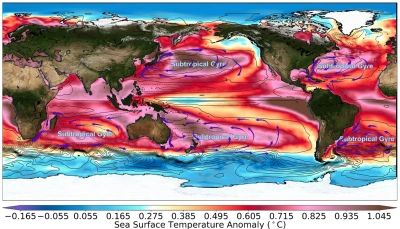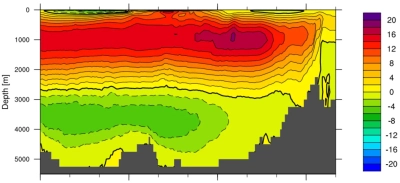- Home
- Our Methods
- Modelling
- Earth System Modelling
Earth System Modelling
Global Earth System Models (ESMs)
Earth System Modelling is a powerful tool for understanding and predicting changes in our planet's complex and interconnected systems. At its core, ESMs involve the use of sophisticated computer simulations to model the interactions between the Earth's atmosphere, oceans, land surface, and ice. These models help us analyze the effects of natural processes and human activities on the Earth's climate and ecosystems.
A crucial aspect of Earth System Modelling is to better understand the climate system; particularly its variability and sensitivity to external natural and man-made perturbations. ESMs simulate a myriad of climatic variables, such as air and ocean temperatures, precipitation, wind patterns and ocean currents, and snow and ice cover. Some models also include components for terrestrial and marine ecosystems, as well as carbon, nutrient, and isotope cycles, to better understand past climate changes and project future conditions. Our models also include ice sheets, a critical element in understanding past ice-age cycles and future sea level changes. By comparing these simulations with historical climate data and paleoclimate proxy records, we assess the accuracy of the models and refine their predictions. On the other hand, our ESMs help to better understand paleoclimatic proxy data and provide insights into the physical mechanisms driving past and future climate change. In addition, we apply data assimilation methods that optimally combine sparse and indirect paleoclimate proxy data with climate model output to provide a comprehensive and coherent reconstruction of past climates. Various ESMs are currently in use at MARUM, including the CESM, the AWI-ESM and cGEnIE.




